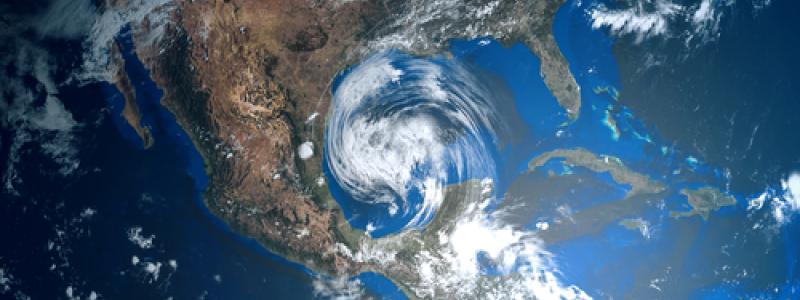What We Learned About Carriers In The Wake Of Hurricane Harvey

Just a week ago, Hurricane Harvey rampaged through Texas and Louisiana and devastated several areas in its path. Over 4.5 million people were affected by the storm; some of which were displaced due to the flooding in their homes. Although the flood waters have started to recede, there are still a number of impassable roads.
Last weekend, the Federal Communications Commission (FCC) reported that almost 95 percent of the cell towers in Aransas County, Texas were out of commission. During the storm, there were some areas wherein cell coverage was scarce -- especially in the four counties lying along the Texas Gulf Coast where the storm made its first landfall. These areas sustained significant outages with thousands having no access to a phone service.
But as compared with past storms, it is good to know that wireless networks have fared reasonably well. A big reason for this is because carriers have learned their lesson when it came to dealing with disasters. To compare with past disasters, when Hurricane Katrina hit New Orleans in 2005, it knocked out over 1,000 cellular sites. In 2012, Superstorm Sandy hit the eastern part of the country and affected around a quarter of the wireless networks in the area. These numbers come from the FCC's database.
Out of the 7,804 cell sites situated in Harvey's path, only 4 percent experienced outages in last week's events. The experts consider this small number remarkable as opposed to the past outages that have occurred in other calamities. Despite this, there are some critics who believe it is still too early to give carriers credit for this. Especially since cell service is critical during such calamities, carriers are expected to step up and be the help that people can rely on. After all, fewer people own landlines nowadays.
Lessons Learned From Past Calamities
From a cellular coverage standpoint, most of the devastation was experienced by the four counties that was hit by the storm first. Wireless carriers, however, quickly worked to make sure service would be restored. By Wednesday, the number of cell towers affected by the storm had already been cut down to half. It is likely that wireless carriers have learned valuable lessons from past disasters to make sure they can prepare for last week's hurricane. As an example, both AT&T and Verizon Wireless made sure to pile up fuel for their backup generators in their cell sites. Once the storm passed, they could quickly refuel their generators in case of a power outage.
Not to mention, the major carriers had prepared COWs (cell sites on wheels) or portable cell towers. These were easily deployed in areas wherein cell towers sustained permanent damage. As for the cell towers with damaged fiber lines, Verizon made sure to set up temporary microwave links so that connection over the air could be completed.
In addition to these measures, the wireless carriers are also doing their best to recover quickly from the damage brought about by the storm. Both Verizon and AT&T have deployed drones to assess cell tower damage as opposed to sending a tower climbing crew. This is a faster and safer solution, especially in areas that are still flooded. The drones look for things like a frayed coax cable, cracked antennae, and any other issues that are currently causing an issue or could potentially lead to a service interruption in the next few days.
It is also important to point out that carriers have since made necessary changes to ensure their networks are more resilient than in the past. One way they have done this is by reducing the size of cell sites by opting for small cell technology. This is a more resilient option as traffic can be easily handed off to sites unaffected by the storm.
Lastly, wireless carriers learned that during times such as these, it is important for them to work together and share their infrastructure so that each wireless customer has access to service, regardless of the carrier they are signed up with. And in a time of calamity, this small gesture of working together can mean a big deal, particularly to those stranded in flooded areas.
But is this enough? For consumer advocates (such as Costa), the answer is no, since there were still areas that experienced outages. The FCC is recommended to inspect the carriers involved in the outages and check what the cause were. There is still a need to verify whether or not wireless carriers were adequately prepared for Hurricane Harvey.
Ajit Pai is set to visit affected coasts on September 5th. He promised that they would "do everything they can to help restore communications services." The FCC chairman has also promised that they would ensure "those affected can get back on their feet as quickly as possible."
Related Blog Articles
- Twigby’s Self Care: Making Mobile Plan Customization Easy For Customers
- What New Cool Stuff Will Apple Unveil On September 12th?
- Need A Phone Or Plan For Your Kid At School? Try TextNow Wireless.
- Here Are The Results Of Wirefly’s Carrier Internet Speed Rankings
- A Brief Guide To Everything Apple Announced During Its Event
- Want a Cellular Plan for the LTE-Enabled Apple Watch? Prepare to Pay $10 a Month.
- Starbucks’ Wireless Chargers to Offer Support for New iPhone Devices
- Can ZTE Overtake LG in the US Mobile Market?
- Pi: Bringing Contactless Wireless Charging Into Life
- Trading of HTC’s Shares To Halt -- Will there be a Takeover by Google Soon?
Related Blog Posts
- Report: Drug users are using wearable devices during binges
- Spotify allows Android users to reorder playlists; Pandora lets users share tunes to Snapchat Stories
- WhatsApp combats fake news with a new forwarded label
- FCC: Today’s improving mobile networks can impact healthcare costs
- Did Apple Music already overtake Spotify in America?


 Menu
Menu